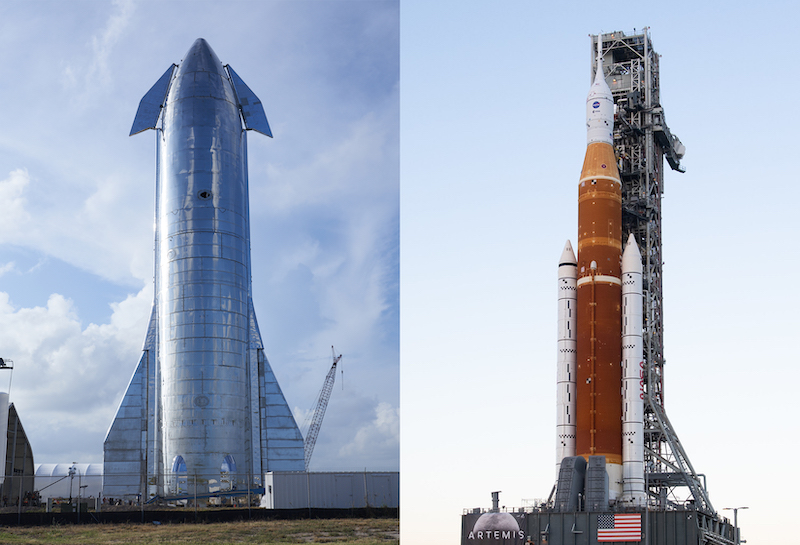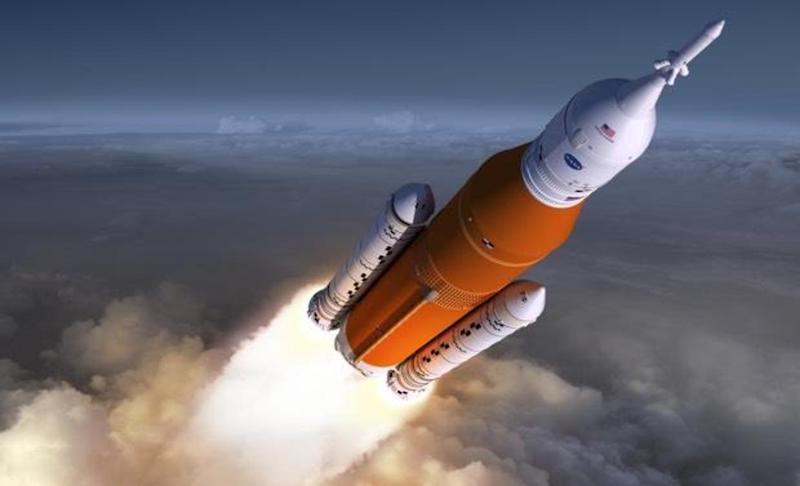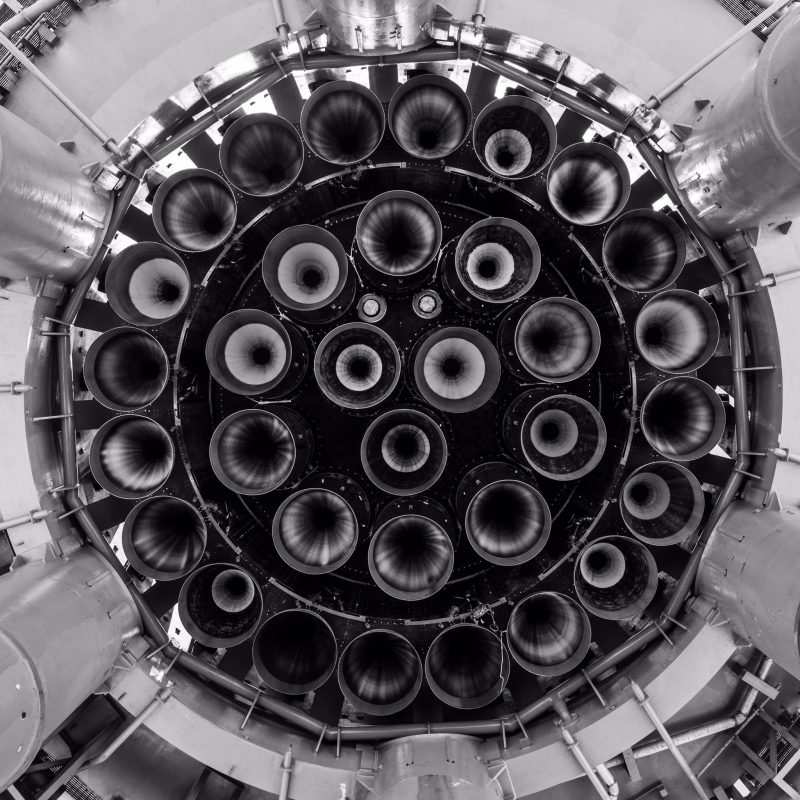
SLS v Starship: Which will fly first?
Following the successful completion of the launch dress rehearsal for NASA’s Space Launch System (SLS) on June 20 – and with SpaceX’s Starship 24 back on the launch pad as of Wednesday, ready for its first orbital test flight – the world is witnessing a mini space race to see which of these two spaceflight heavyweights will leave the ground first.
Next SLS launch window opens July 26
NASA is currently prepping the SLS for the Artemis 1 mission to the moon. It’s the first in a series of missions that’ll ultimately carry people to the lunar surface. To begin with, Artemis 1 won’t carry a live crew, though. The plan, initially, is to use SLS to boost the Orion spacecraft – empty except for twin mannequins – toward the moon. Ultimately, the craft will fly around the moon and return.
Moon missions have launch windows, and the next one for Artemis 1 opens as early as July 26 and closes on August 10. Read more about the various factors determining Artemis 1 launch windows here. In the July 26 to August 10 launch window, there are 13 opportunities for liftoff, for Artemis 1. Later, a second (and probably more reasonable) launch window opens August 23 and closes September 6. The second window will give NASA 12 opportunities to launch SLS and Artemis 1.
Currently, the SLS is back in the Vehicle Assembly Building at Kennedy Space Center, where it is undergoing final preparations for the Artemis 1 launch. There, techs will recheck flight systems and replace a leaking seal on the aft quick disconnect umbilical assembly. Then, it’s a go for a launch to the moon. Easy … right? Nothing is easy in rocket a big complicated rocket like this one. The Artemis mission and SLS have at least the standard number of delays. And the June 20 dress rehearsal was a nail-biter. So we’ll see.
By the way, SLS is costly, in part because it’s not reusable. In fact, the only part of the Artemis 1 mission that’ll return to Earth is the (empty except for mannequins) Orion crew capsule. Cost of mission: $4.1 billion.

Starship 24 now on launchpad
Meanwhile, SpaceX’s heavy lift vehicle is essentially ready for its first (Earth-orbital) test flight, too. But, it’s being held back, awaiting a final OK from the FAA to fly.
Starship is a two-stage-to-orbit super heavy launch vehicle. The first-stage booster is called Super Heavy. Likewise, the upper-stage spacecraft is Starship (although both together are called Starship). And, significantly, both parts of Starship are completely reusable. SpaceX’s new Raptor engines will power them both. Super Heavy will have 33, and Starship six.
On Saturday (July 2, 2022) SpaceX tweeted a picture of 33 brand new Raptor engines installed on Super Heavy Booster 7 and another six Raptors in place on Starship 24. Engineers placed the massive silver cylinder of Booster 7 onto the launch pad at Starbase in Boca Chica, Texas a week earlier with the Chopsticks lifting system, to await its payload.
SLS v Starship: Super Heavy Booster 7 joined by Starship 24
Today (July 6, 2022), the payload arrived. Starship 24 joined Super Heavy Booster 7, which rolled to the pad this morning. Presumably, the two will now be mated.
Then it’s a waiting game. FAA approval is pending the completion of a long list of relatively simple tasks SpaceX must complete in order to mitigate its environmental impact to sensitive wetlands that surround Starbase.

Bottom line: Will Starship beat SLS to space? Will SLS beat Starship? With FAA approval determining Starship’s launch capability – and with SLS having been beset with multiple delays for some time – it’s a mini space race!











